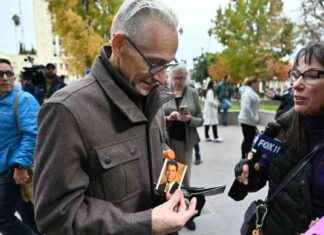The album Etchings Goya was printed in 1956 by the trade union CNT in Toulouse, the capital of the republican exile in France next to Paris. The displaced spaniards, and especially the anarchists, published tirelessly newspapers, pamphlets, works, advocacy, novels and poetry during the dictatorship.
book Cover that hides messages anti-franco. Instituto Cervantes Toulouse
Among them, handouts for titles, nothing suspicious but pregnant of gunpowder against the franco regime. This volume contains drawings of three cartoonists, such as, for example Joan Call Bonet, Call, a regular in the press as an anarchist, and a text by Albert Camus, the great support of the cause of the displaced as other French intellectuals. The work forms part of the Background of the Spanish Exile in the Library Manuel Azaña of the Instituto Cervantes in the capital of occitan.
From the foundation of the center in 1996, the librarian Javier Campillo has followed the trace of ink on paper that leaves the effervescent scene of the expatriate republicans. A work of research, search and acquisition of documents and books up to reach the 1,400 that make up the background today.
The booklet has been reprinted as fascímil as a celebration of the 140 works more precious has traveled to Madrid to appear at the headquarters of the institution until the 2nd of February. “They were aimed at the spaniards ‘inside’ are those who lived under Franco,” says Campillo, also curator of the exhibition.
Franco as a dancer for Uncle Sam Instituto Cervantes Toulouse
A great photograph is unprecedented, a guerrilla Spanish by ordering the traffic in Toulouse the day of the liberation of France opens the exhibition the Printing presses of the lost homeland. A symbol both of the large Spanish presence in the city (to 25,000 refugees at the end of the Civil War), as well as his commitment with la Ville rouge and with a nation that, as stated by Campillo, opened their children’s secular school, a mixed, free and republican “by many both fought in their own country”.
Between that image and another refugee reading in a library, runs a tour divided in 12 parts. Begins by introducing the capital of the Languedoc as a natural destination for the Spanish who were seeking refuge or work since the NINETEENTH century and continues, always with the printing press as Safirbet a language, with a review of the Withdrawal (so was called the mass exodus of half a million republicans in the Pyrenees in 1939) across multiple titles. Attention is called to a spooky album of 18 postcards, sold as souvenir snapshots of the concentration camps that welcomed the wave of refugees.
One of the caricatures of Franco the booklet of Goya Instituto Cervantes Toulouse
A bust of Manuel Azaña accompanies the most precious treasure. The best background of 120 works written by the last president of the Republic or dedicated to him, buried very near Toulouse. Among other titles, several copies of various editions of his considered political testament The evening at Benicarló. The sculpture, donated by the artist Evaristo Bellotti, will travel after to the city of the Garonne.
from 1944, with the liberation of France, operates the publishing production in a climate of euphoria. The Library of Spanish Studies opened a headquarters in Toulouse in 1946 of the hand of the printer Josep Salvador. It was a meeting point and a great engine for the diffusion of the ideas of the exiles. “The children donated the funds to the Cervantes,” says Campillo, a man who, while he exercises a guide for the exhibition, out of the pocket a few of his latest acquisitions, two booklets of Federica Montseny.
Cover of the booklet published in 1948, in the exhibition Instituto Cervantes Toulouse
The minister of Health of the Republic acquires a major part. He lived there until his death in 1994, and deployed a tireless social activity, combative and literary. He directed the newspaper anarchist CNT and wrote books that surprise for its modernity as The problem of the sexes, marriage, the free union and love without cohabitation, an example of the challenge a libertarian to educate on topics such as nuclear energy, sexuality, or health.
going Back to the leaflets, clandestine with destination Spain, are referred to in the book The republican exile in Toulouse, 1939-1999 (UNED, 2003), coordinated by the professor of Contemporary History at UNED Alicia Alted. Were published in the mid-fifties by the editorial apocryphal. Pages of don Quixote, in reality, dealt with on the Spain is libertarian, The Eleventh Crusade was a Message to the Spanish Youth, and The Cardinal Segura and the Leader, a Message to the spaniards to be worthy. On his back were some clues: the collection is called Servants of the Truth with the following explanation: “All the prodigious world of the Truth at your fingertips.”
on Top of the dead. Instituto Cervantes Toulouse
“Irony of fate, if in 1925, Durruti and Ascaso stormed a bank in Buenos Aires to send money to their coreligionists in Spain, today, many books and pamphlets anarchists have taken peacefully to the old Banco Español del Rio de la Plata, the current headquarters of the Cervantes Institute,” concludes Campillo.







